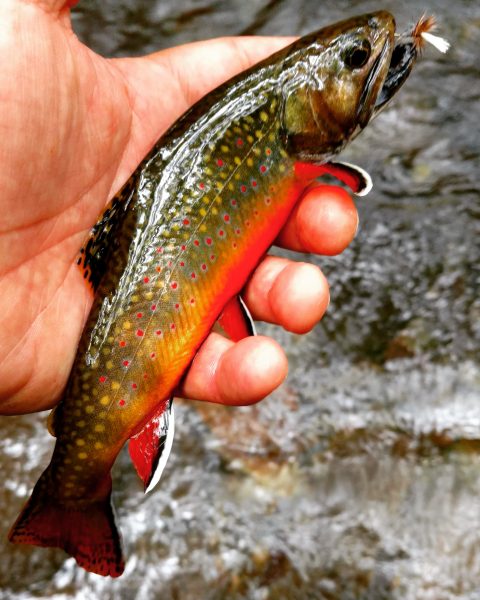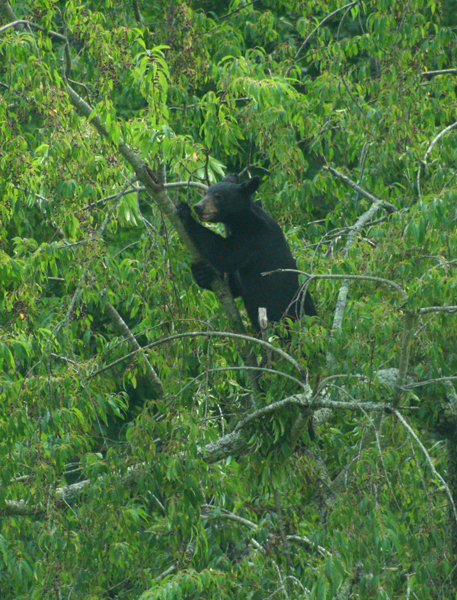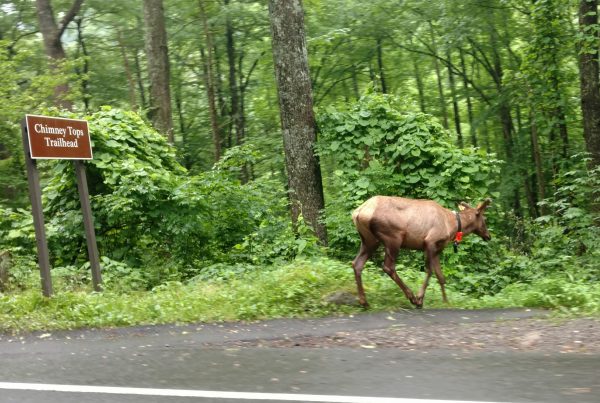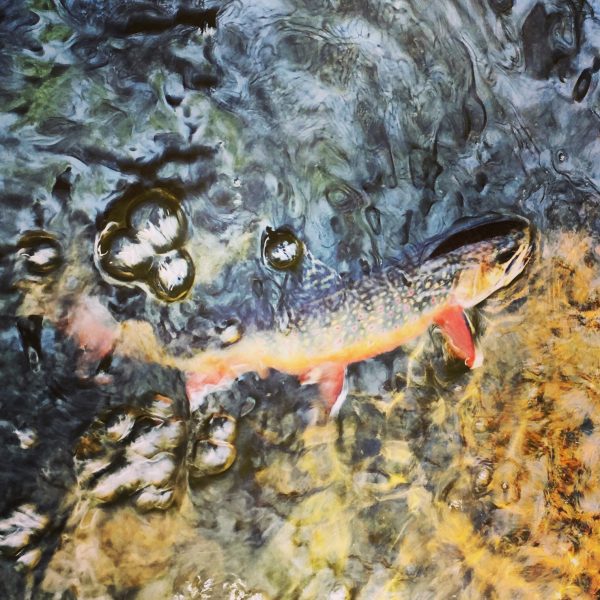We’ve been guiding 100 days or more per year in the Smokies on top of plenty of fishing over the many years now. In all that time on the water I’ve been aware of changes but last week a couple of things happened on the same day to make me realize I’m fishing in a different era in the Smokies than when I started in the early 1990’s. This is especially true when it comes to brook trout and wildlife.
When I started fly fishing it was pretty difficult to come by a brook trout. Almost all waters with brook inside the national park were closed to fishing in order to protect their dwindling numbers. There were a few places in the Cherokee National Forest where you could find them, but most required a bit of detective work followed by a decent hike to pretty small water where a fly had difficulty finding the water through tangles of brush. It was always an adventure, but brook trout were somewhat of a rare treat.
Now brook trout are a relatively plentiful commodity in the Smokies. The lifting of restrictive regulations made more water available for fishing, but several large scale stream restorations have brook trout in streams where they were absent for more than a generation. This has happened inside Great Smoky Mountains National Park and in the Cherokee National Forest.
I grew up in East Tennessee and trips to the Smokies for picnics and hiking were common. Deer were everywhere in Cades Cove but bears were a relatively rare sight unless you knew which dumpster to watch. I understand about 300 bears inhabited the park in those days and bear management has undergone a revolution since 1980. Now there are at least 1600 bears in the park and we see them on a pretty regular basis. It’s not unusual for people to see as many as 6 or 7 during a drive around Cades Cove these days and our family probably sees about 3 per month walking past our house in Townsend.
Back in 2001 the National Park Service began a re-introduction of elk which were native to the Smokies but extirpated by 1860 or so. No one alive had ever seen an elk in the Smokies. We’ve made several trips to Cataloochee Valley on the North Carolina side of the park to see them after the re-introduction. Success seemed evident as more and more calves appeared each year and after a few years elk began to show up along the Oconaluftee near Cherokee. They’re still a novelty to see but becoming more common all the time.
This spring there were a couple of young bull elk hanging out near the Chimneys Trailhead on the Tennessee side of the Smokies showing they continue to be on the move. We haven’t seen them since May, but they were there for long enough that we saw them a few times.
While I’ve been aware of all of this first hand, just last week it hit me all at once. I left my house on the way to the river and passed a black bear. Not terribly unusual, but always a treat. Later in the day I had two anglers fishing a relatively hard to reach section of brook trout water when I saw what I believed to be rooting in the soil by wild hogs, but it was different. A medium size tree had been wrecked and all the dirt around it had been churned up, but at the same time it was also tamped firmly down. Closer inspection revealed what looked like a buck rub on a tree, but the tree was much larger than what a deer would rake its antlers on and the tracks in the dirt were closer in size to a horse hoof than a deer track.
For the first time we were catching native brook trout within sight of a tree that had suffered the rage of a bull elk in rut. What a time to be alive and fishing in the Smokies!





Russ Flanary says
In over 55 years of hiking i Smokies I saw my first wild pig on Little River trail just above Spence cabin. My wife and I were fishing well up the trail and walking back at dusk. That was one big pig! Love the brook trout.
Ian says
We’ve seen hogs in a number of places in the park including Elkmont, Tremont, and Hazel Creek over the years but there has been more hog activity above Elkmont this year than we’ve ever seen by far. A series of relatively mild winters coupled with several good years of abundant food like acorns has allowed them to really flourish. Unfortunately the park wildlife department hasn’t been able to keep up even though we heard they removed around 100 or more just from Cades Cove last year. In spite of that we saw one walking along the loop road one afternoon in December with no concern.
Doug Hickman says
Back in July, I was stunned to see a mature herd bull elk and about a half dozen females way up high beside Heintooga Road near Balsam Campground coming out of Flat Creek. Have seen them fairly regularly at the Oconaluftee Park entrance and Cataloochee but not anyplace else until then. Times are indeed a changin in the Smokies!
Ian says
They’re up on Balsam Mountain and along the Blue Ridge Parkway regularly. Not surprising though since that’s between Cataloochee and Oconaluftee. We’ve heard one reliable report of bugling heard on Fontana Lake too so we’re looking forward to all the places we’ll eventually see them.
Jeff Lavender says
See a lot of elk at Cataloochee and Cherokee. Several bear in my yard along with turkey and coyotes. Love the pictures Charity and you take. Enjoyed seeing y’all on YouTube.
Leslie Saidak says
Enjoyable read! And yes, what a time in the Smokies!!
jim brady says
Lovely report.